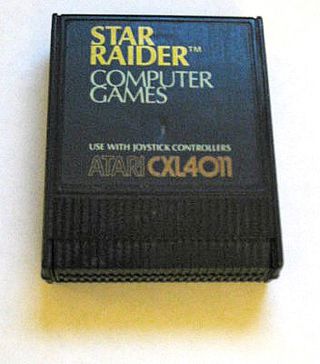Related Research Articles

Digital music technology encompasses the use of digital instruments to produce, perform or record music. These instruments vary, including computers, electronic effects units, software, and digital audio equipment. Digital music technology is used in performance, playback, recording, composition, mixing, analysis and editing of music, by professions in all parts of the music industry.

MSX is a standardized home computer architecture, announced by ASCII Corporation on June 16, 1983. It was initially conceived by Microsoft as a product for the Eastern sector, and jointly marketed by Kazuhiko Nishi, the director at ASCII Corporation. Microsoft and Nishi conceived the project as an attempt to create unified standards among various home computing system manufacturers of the period, in the same fashion as the VHS standard for home video tape machines. The first MSX computer sold to the public was a Mitsubishi ML-8000, released on October 21, 1983, thus marking its official release date.

Yamaha Corporation is a Japanese musical instrument and audio equipment manufacturer.

The Yamaha DX7 is a synthesizer manufactured by Yamaha Corporation from 1983 to 1989. It was the first successful digital synthesizer and is one of the best-selling synthesizers in history, selling more than 200,000 units.
Kawai Musical Instruments Manufacturing Co., Ltd. is a musical instrument manufacturing company headquartered in Hamamatsu, Shizuoka, Japan. It is best known for its grand pianos, upright pianos, digital pianos, electronic keyboards and electronic synthesizers. The company was founded in August 1927.

Yamaha XG is an extension to the General MIDI standard, created by Yamaha. It is similar in purpose to the Roland GS standard.

The Yamaha CS-80 is an analog synthesizer introduced by Yamaha Corporation in 1977. It supports true 8-voice polyphony, with two independent synthesizer layers per voice each with its own set of front panel controls, in addition to a number of hardwired preset voice settings and four parameter settings stores based on banks of subminiature potentiometers.

The YM2413, a.k.a. OPLL, is an FM synthesis sound chip manufactured by Yamaha Corporation. It is related to Yamaha's OPL family of FM synthesis chips, and is a cost-reduced version of the YM3812 (OPL2).

The Clavinova is a long-running line of digital pianos created by the Yamaha Corporation. The name is a portmanteau of the two words Clavier meaning 'keyboard instrument” and nova meaning “new”.

The Jupiter-8, or JP-8, is an eight-voice polyphonic analog subtractive synthesizer introduced by Roland Corporation in early 1981.

The Yamaha Motif is a series of music workstation synthesizers, first released by Yamaha Corporation in August 2001. The Motif replaced the EX series in Yamaha's line-up and was also based on the early Yamaha S series. Other workstations in the same class are the Korg Kronos and the Roland Fantom G. The series' successor is Yamaha Montage, released in 2016, followed up by the Yamaha Montage M in 2023.

The Roland E-20 is a keyboard instrument introduced by Roland in 1988.
The Yamaha Tyros2 is a digital arranger workstation 61-key keyboard produced by Yamaha Corporation in 2005. It was produced and designed by Kazuhisa Ueki and Soichiro Tanaka, respectively. The Tyros2 introduced several new features to the Tyros series, such as 'SuperArticulation! Voices', allowing for more realistic sounding voices during performances, and hard-disk recording allowing users to export audio recordings. Many features seen in the original Tyros returned to the Tyros2, including MegaVoice, primarily used in MIDI recording, which use velocity switching to add realism; Live!, Sweet! and Cool! voices, that are sampled using stereo and multilayered samples to better capture the natural presence expression and vibrato of the real instruments; and Internet Direct Connection, allowing users to download content directly to the instrument.

A ROM cartridge, usually referred to in context simply as a cartridge, cart, cassette, or card, is a replaceable part designed to be connected to a consumer electronics device such as a home computer, video game console or, to a lesser extent, electronic musical instruments.

The YM2414, a.k.a. OPZ, is an eight-channel sound chip developed by Yamaha. It was used in many mid-market phase/frequency modulation-based synthesizers, including Yamaha's TX81Z, DX11, YS200 family, the Korg Z3 guitar synthesizer, and many other devices. A successor was released as the upgraded OPZII/YM2424, used only in the Yamaha V50.
The Yamaha RX-5 is a programmable digital sample-based drum machine built by Yamaha, in 1986.

The Yamaha PSR-E323, also known as the YPT-320, is an electronic keyboard manufactured by the Yamaha Corporation in 2009. It is a basic home keyboard intended for learning and personal use.

The Yamaha DX21 is a digital controlled bi-timbral programmable digital FM synthesizer with a four operator synth voice generator which was released in 1985. It uses sine wave-based frequency modulation (FM) synthesis. It has two FM tone generators and a 32-voice random-access memory (RAM), 32 user voices and 128 read-only memory (ROM) factory preset sounds. As a programmable synth, it enables users to create their own unique synthesized tones and sound effects by using the algorithms and oscillators. The instrument weighs 8 kg (17.6 lbs). On its release, it sold for $795.
The OPL series are a family of sound chips developed by Yamaha. The OPL series are low-cost sound chips providing FM synthesis for use in computing, music and video game applications.
References
- 1 2 "Undocumented Sound Chips 2154" . Retrieved 20 August 2015.
- ↑ "EEVblog #256 – Yamaha PSR-80 Keyboard Teardown". EEVBlog. Retrieved 26 February 2014.
- ↑ "uts". rx15. kyouichisato.blogspot.co.uk. Retrieved 20 August 2015.